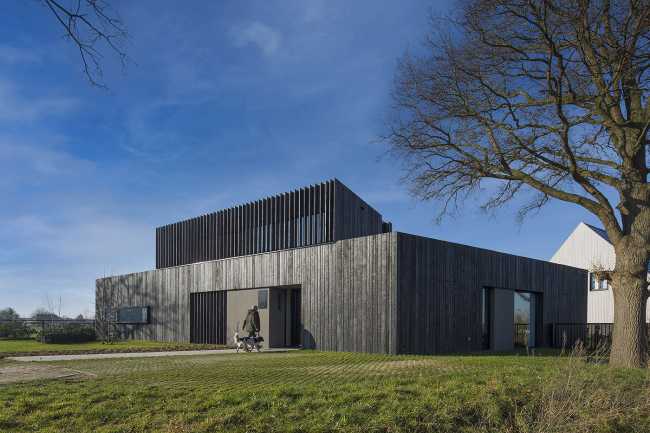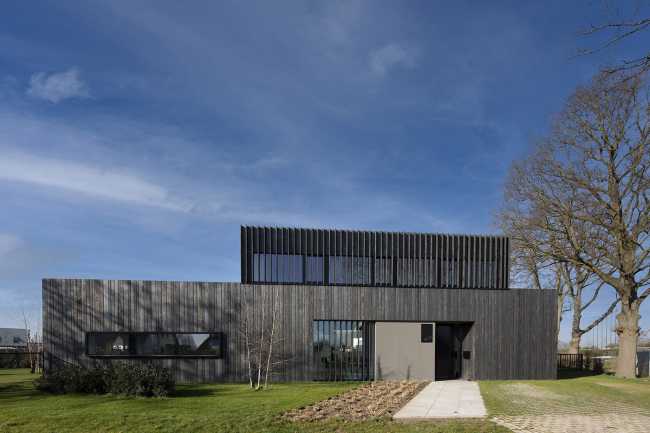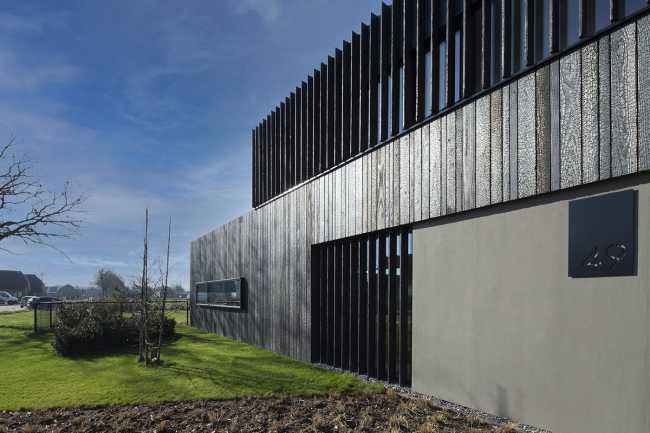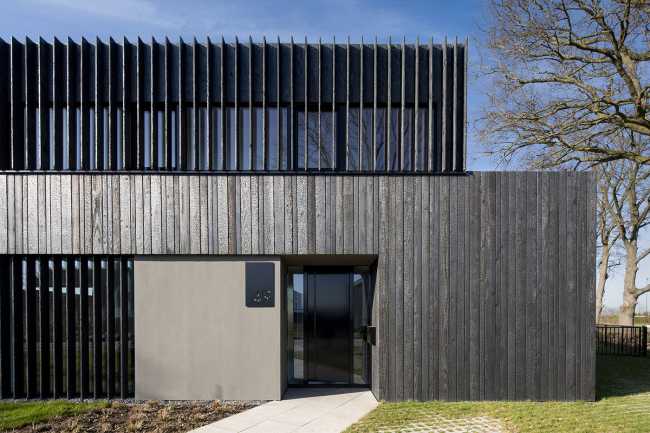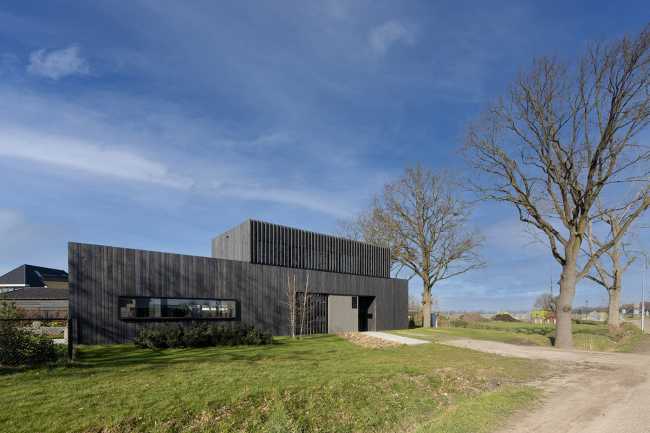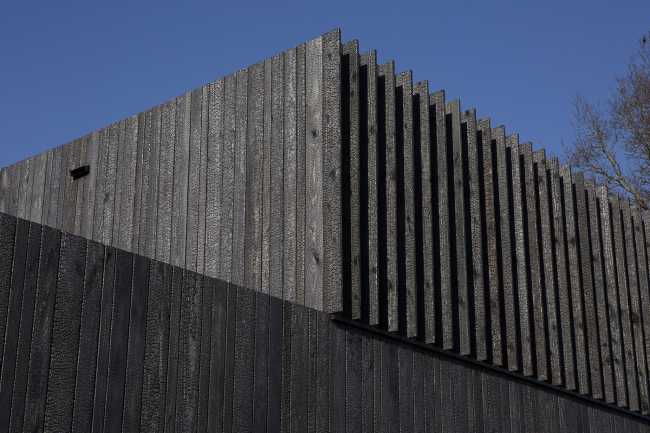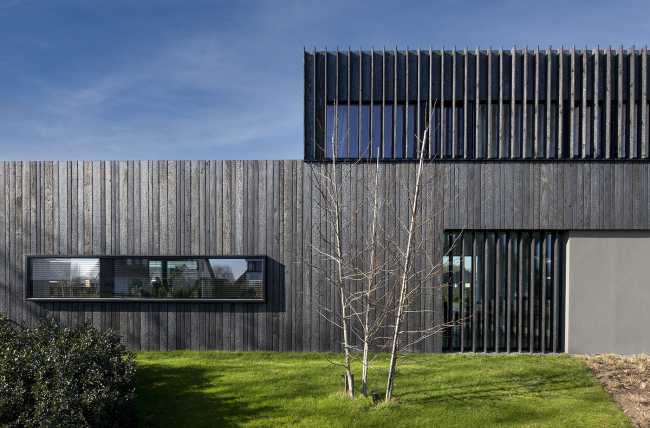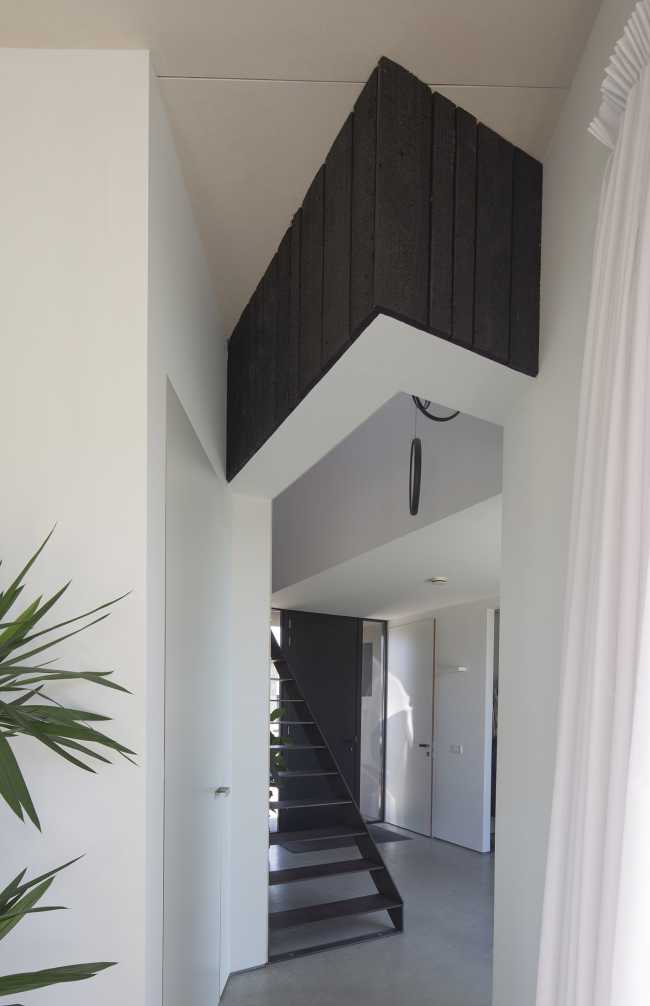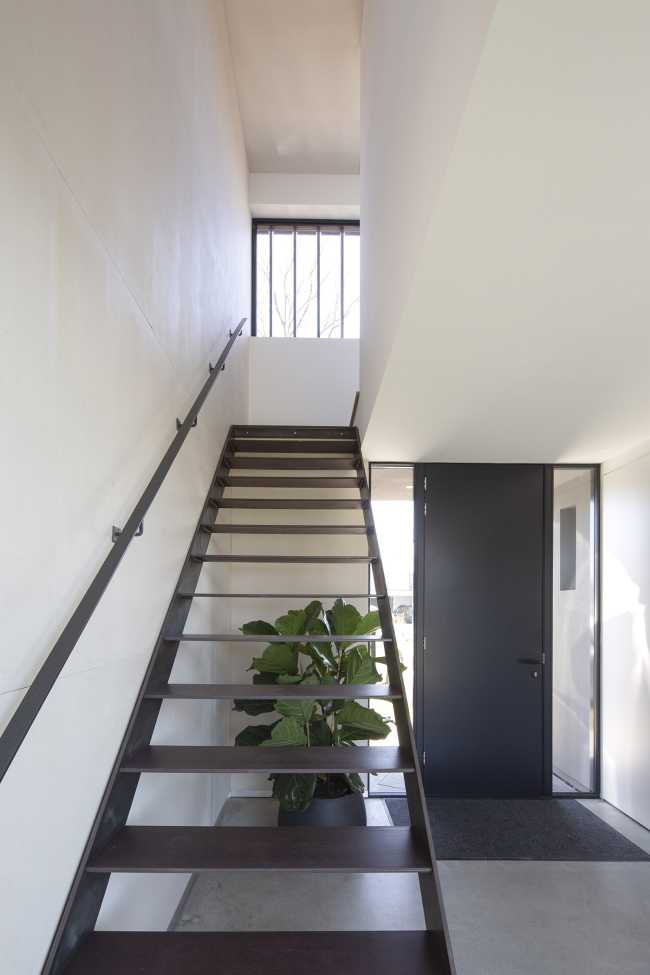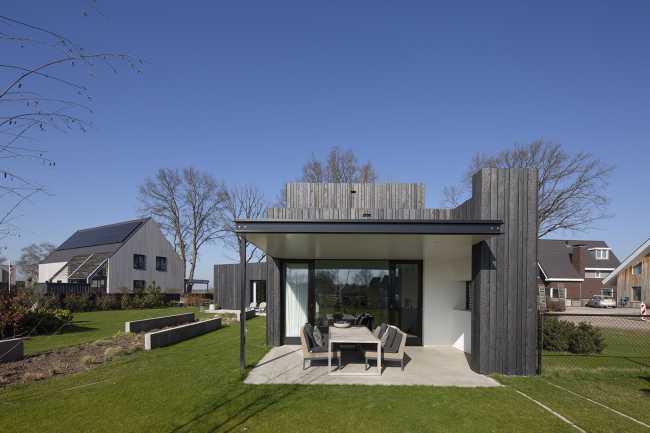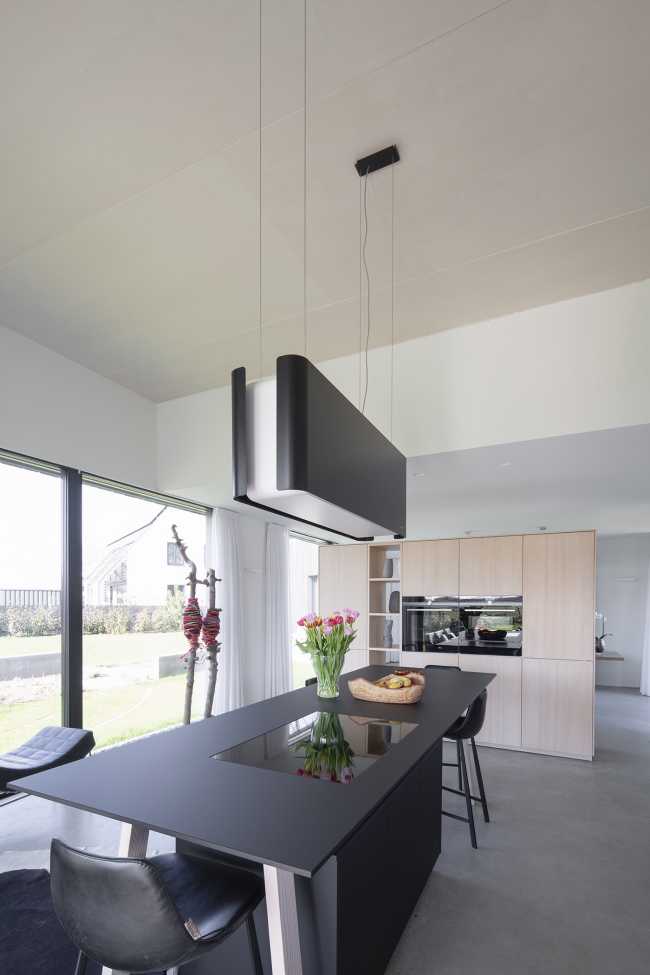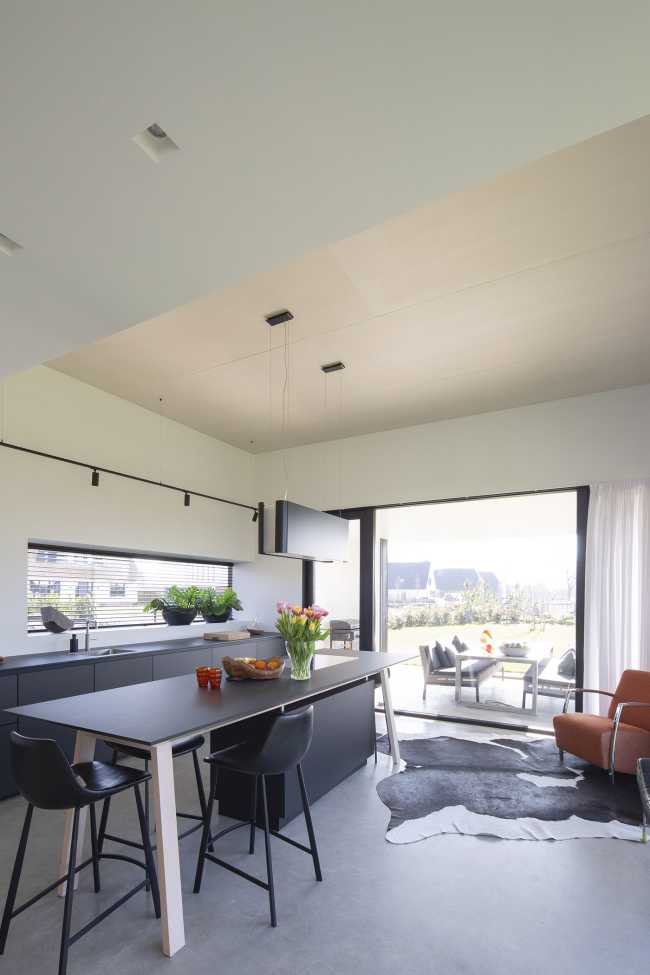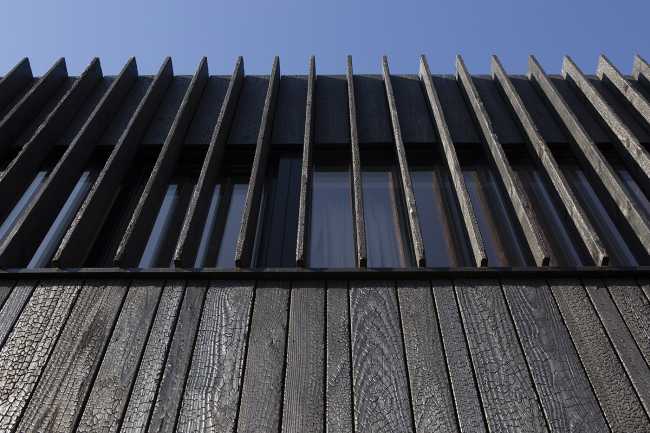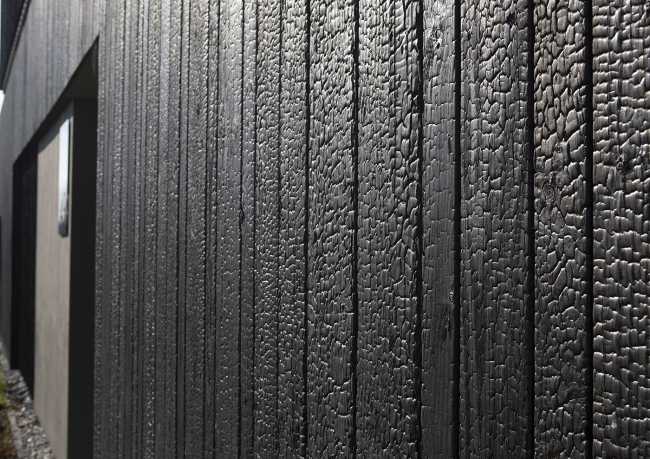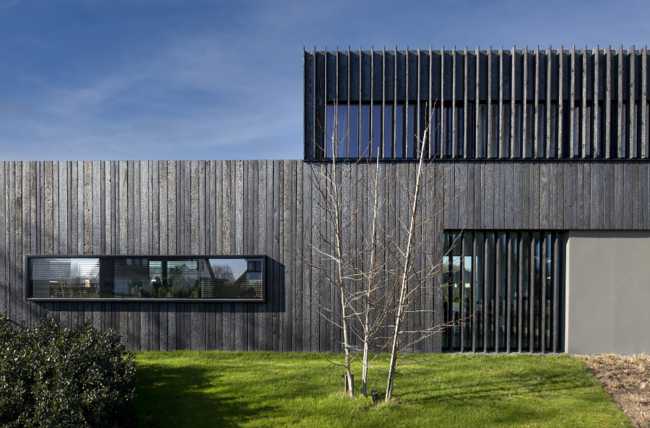The Black House, designed by Joris Verhoeven Architectuur, is located in a rural sprawl and, at first glance, does not stand out strikingly from the surrounding houses. The finely burned woodwork cites the typical black barn cladding of this area of the Netherlands.
The burnt-wood façade cladding technique originated in Japan, where it is called Shou Sugi Ban. This centuries-old technique makes wood maintenance-free and sustainable; burning creates a carbon layer that prevents moisture absorption and mold growth
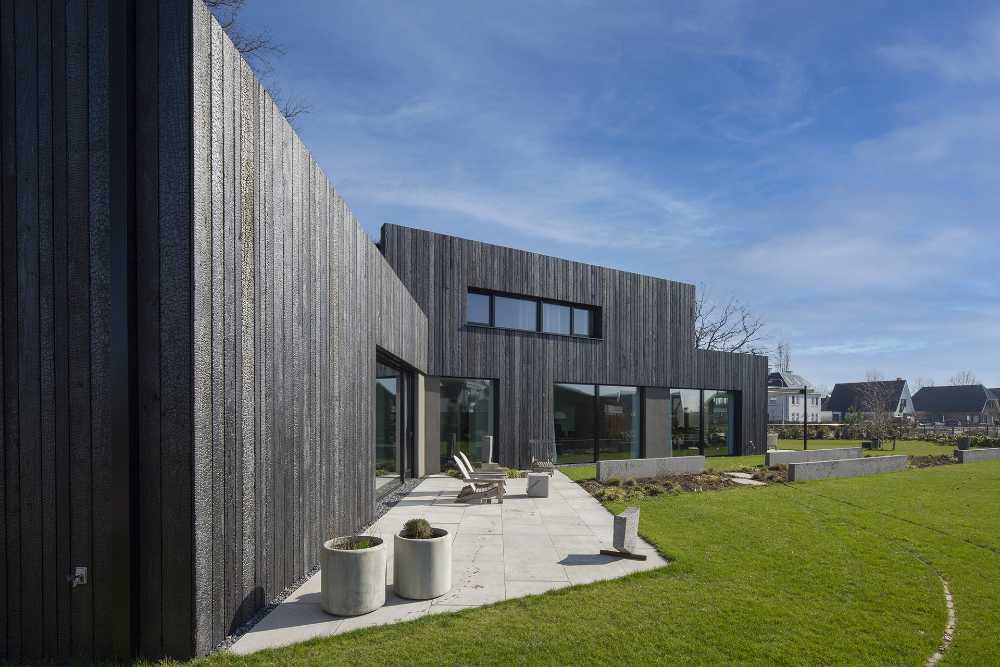

Burnt wood and an energetic neutrality in the silky Dutch Black House
An asymmetrical sculptural play of both body and openness, enhanced by minimalist details that provide a powerful luminosity to the space, this is the Black House in Berkel-Enschot clad in burnt wood that gives it a smooth, shiny skin like black silk
- #Europe
- #Netherlands
- #Architectures
- #Residence
- #Villa
- #Wood
- #Architecture
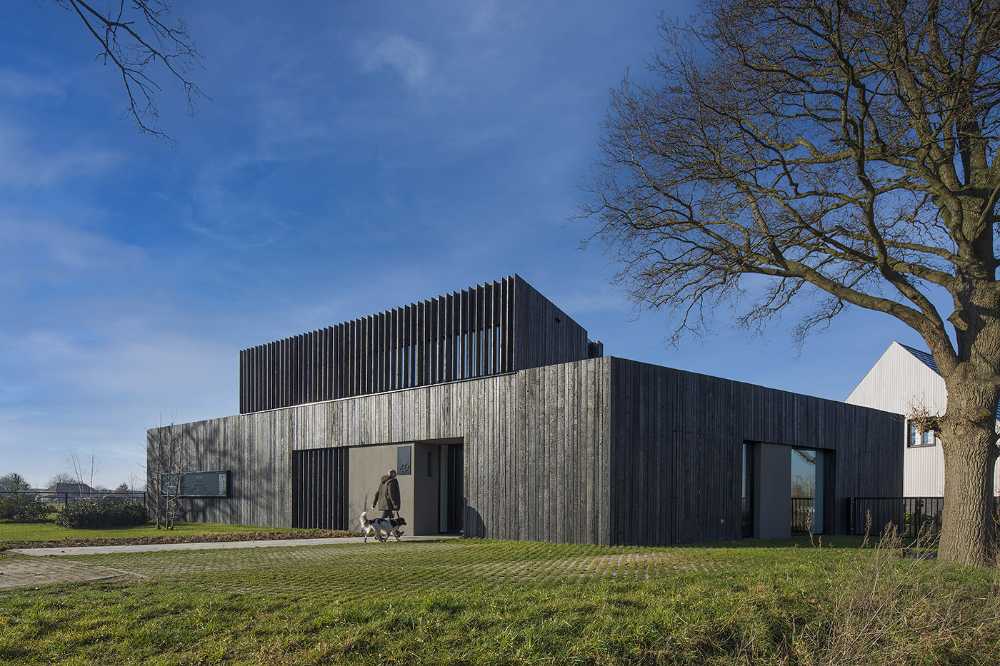
The bevels of the Black House building follow the lot boundary and solar orientation.
The house's spaces are designed to adapt to the life cycle of the inhabitants; in fact, when necessary, it will be possible to move the bedroom and bathroom to the ground floor. The rooms are arranged according to an open structure with as few doors as possible. The ceiling height in the living room and kitchen has been increased compared to the other rooms to give more spaciousness
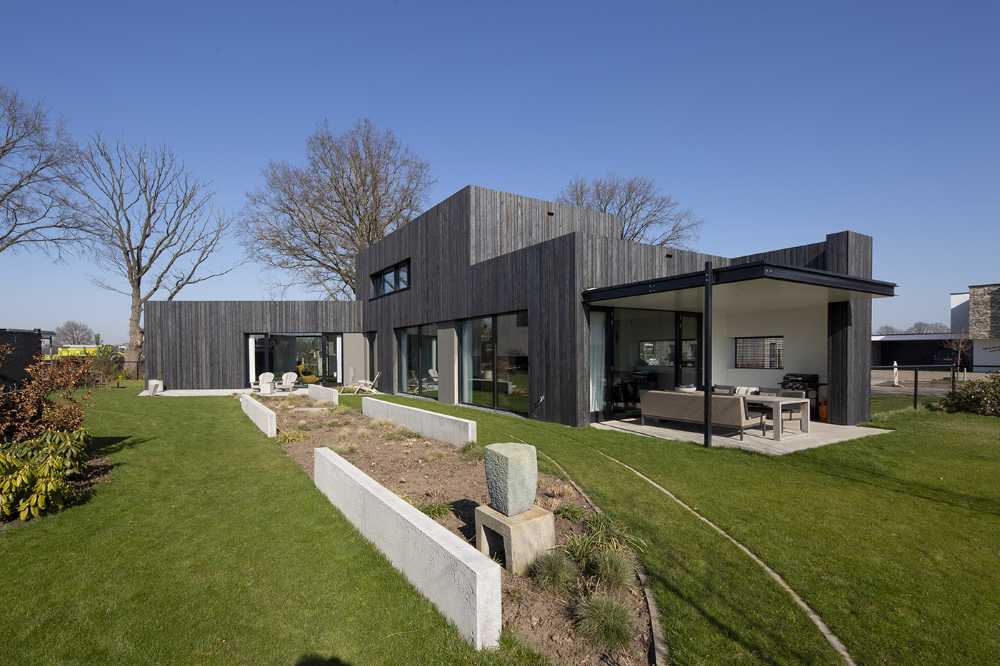
The Black House is prefabricated and sustainable: it is built with wooden boxes filled with linen insulation. Birch plywood is occasionally used for decoration. This "pure" and rapt way of building, where the structural work also constitutes the finish, gives great advantages in terms of site duration and construction costs
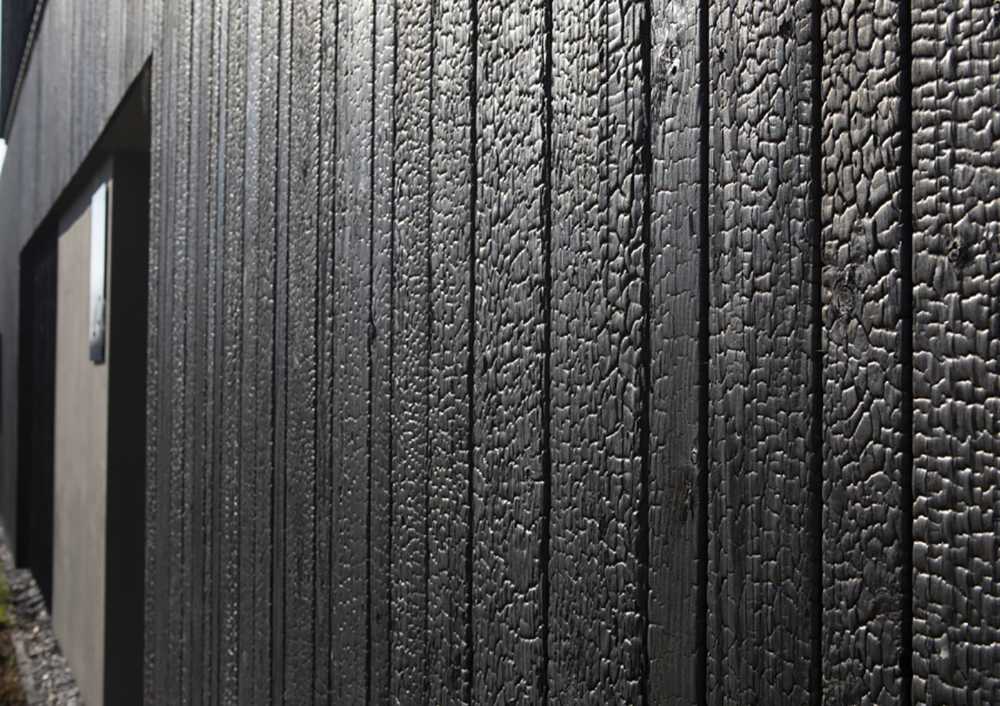
The essential choice of materials used, the low number of movements for transportation and the minimal use of water on the construction site means building an ecologically sustainable house and contributing to a better future for all. The Black House's prefabrication and design measures that result in it having a negative CO2 footprint make it energy neutral
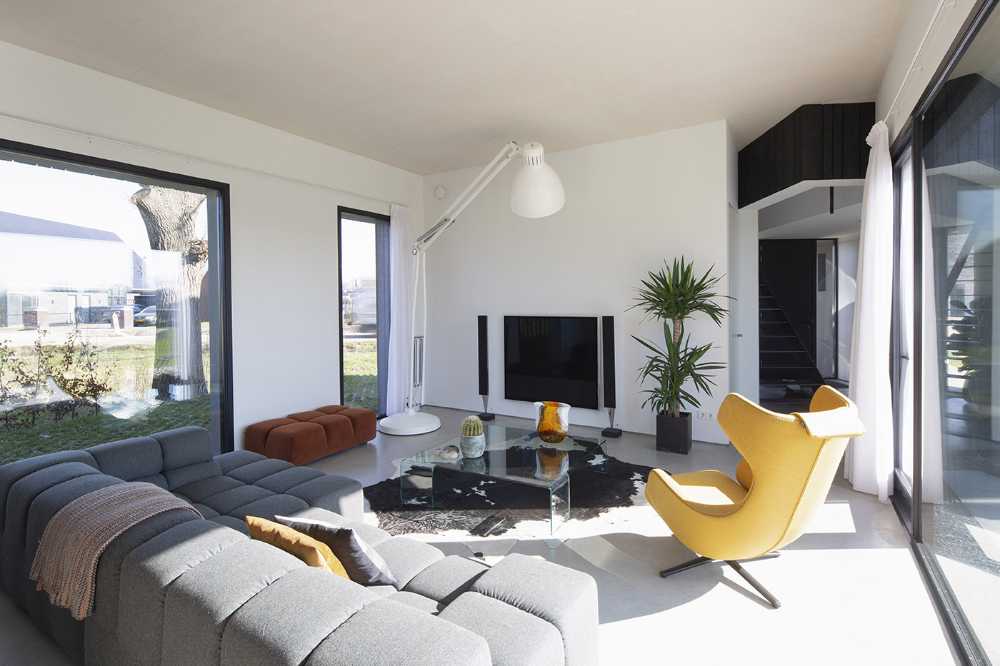
Gallery
Photo credits
Top image, content and gallery images: John van Groenedaal

